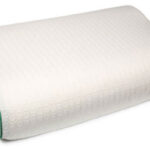Important Notes on Using Cutting Boards
Wooden cutting boards are natural and popular for their durability. However, proper cleaning and maintenance are essential as they are prone to cracking and mold.
According to PGS.TS Nguyen Duy Thinh (former lecturer at the Institute of Biotechnology and Food Technology, Hanoi University of Technology), mold on wooden cutting boards can produce aflatoxin, a potential carcinogen. Cracks on the surface, if not cleaned properly, can also harbor bacteria that can contaminate food. Therefore, it is important to replace wooden cutting boards as soon as they show signs of cracking or mold.
It is crucial to thoroughly wash the cutting board after each use, especially after cutting meat or fish. In addition to promoting mold growth, improper cleaning can leave an unpleasant odor on the board due to the decomposition of nutrients.

Illustration
Plastic cutting boards with excessive scratches or old age
Plastic cutting boards are becoming more common in households due to their affordability and ease of cleaning. However, over time, scratches can appear on the surface, providing an ideal environment for bacteria and mold if not properly sanitized.
When cutting or chopping hot foods, plastic particles can melt and leach into the food, creating toxins that affect digestion. Therefore, it is crucial to thoroughly clean plastic cutting boards and replace them immediately if they have excessive scratches and stubborn stains to ensure food safety.
Rusty metal cutting boards
Metal cutting boards are known for their ease of cleaning and non-absorbent properties. However, low-quality aluminum or stainless steel boards can oxidize and rust over time.
Using a rusty cutting board, especially with acidic or salty foods, can cause rust particles to leach into the food. Consuming food contaminated with metal oxides poses a serious health risk. Therefore, it is important to clean metal cutting boards immediately after use.
Natural Cutting Board Cleaning Methods
It is recommended to replace your cutting board every one to two years, even if it shows no signs of damage. Additionally, replace it immediately if there are signs of mold, excessive scratches, or strange odors.
Disinfecting your cutting board is crucial to reduce bacteria and eliminate odors. Using dish soap may not be effective. Studies suggest that liquids containing lactic acid, such as lemon juice or apple cider vinegar, can help reduce bacteria on the board’s surface.

To disinfect, rub the wooden surface with a lemon slice or spray a disinfectant solution onto the board, let it sit for about 5 minutes, then rinse with water and air dry. It is recommended to disinfect your cutting board at least once a week.
Alternatively, you can use white vinegar or a specialized disinfectant solution to clean your cutting board. Simply spray undiluted vinegar onto the surface and wipe it clean with a dry cloth or paper towel. Then, let it air dry in a well-ventilated area. Vinegar has strong deodorizing properties and will effectively remove any unpleasant odors.
The Non-Stick Pan’s “Blacklisted”: This Alternative Cookware is Preferred Instead
The non-stick coating on a non-stick pan is highly susceptible to damage and peeling due to everyday use and improper handling. With regular use, the coating can start to break down, exposing the base metal and compromising the pan’s non-stick properties. This can lead to a sticky situation, literally, with food beginning to adhere to the surface and making cleanup a chore. Additionally, improper cleaning methods, such as using abrasive sponges or harsh chemicals, can expedite the deterioration process, leaving you with an uneven and ineffective cooking surface. It is crucial to understand the delicate nature of non-stick coatings to extend the lifespan of your cookware and maintain its performance.



































